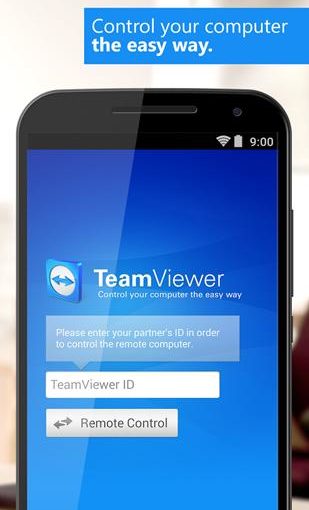Artificial intelligence now sits at the centre of modern transaction work. Deal teams use machine learning and large language models to classify documents, extract clauses, flag anomalies, and summarise findings for executives who must decide quickly. The goal is not to replace expert judgement. It is to reduce noise, surface risks earlier, and provide a verifiable trail of how conclusions were reached.
This guide explains where AI delivers value today, the controls buyers should insist on, and how to integrate automation into disciplined M&A due diligence workflows.
Why AI matters for due diligence in 2025
-
Volume and speed: Data rooms often contain hundreds of thousands of files across contracts, financials, and technical artefacts. AI reduces manual triage time and helps teams focus on material issues.
-
Complexity: Cross‑border transactions bring varied legal frameworks and disclosure standards. Models trained on clause libraries can highlight governing law, change‑of‑control, assignment, and data‑transfer provisions quickly.
-
Consistency: Automation creates repeatable checks that human reviewers can audit, which is valuable for boards, insurers, and regulators.
For broader context on AI governance, see the European Commission’s overview of the EU AI Act, which outlines risk categories and compliance expectations. For cyber and incident‑cost trends relevant to transaction risk, IBM’s 2025 report remains a useful benchmark.
What AI can do well today
1) Smart ingestion and classification
Models detect document types — NDAs, MSAs, employment agreements, DPAs — and route them to the right reviewers. Duplicate detection and version matching reduce clutter.
2) Clause extraction and comparison
Tools pull key clauses such as termination, MFN, exclusivity, audit rights, liability caps, IP ownership, data processing, and transfer restrictions. Side‑by‑side comparisons expose deviations from playbooks.
3) Redaction at scale
Automatic masking of personal data, bank details, and trade secrets speeds sell‑side preparation and reduces leak risk.
4) Q&A acceleration
Language models draft first‑pass answers based on approved sources. Teams review, edit, and publish with full attribution to the originating documents.
5) Financial and operational signal finding
Entity resolution, invoice parsing, and anomaly detection point analysts to suppliers with concentration risk, unusual payment terms, or sudden margin shifts.
6) Executive summaries with evidence links
AI produces structured briefs that link back to source pages. Decision‑makers can validate claims without digging through folders.
What still needs human judgement
-
Materiality: Deciding what truly affects value or risk.
-
Context: Interpreting ambiguous clauses, sector‑specific norms, or regulatory nuances.
-
Negotiation: Crafting remedies, warranties, or price adjustments.
-
Ethics and culture: Assessing leadership quality, incentives, and control environments.
Controls to demand from AI‑enabled platforms
-
Access governance
SSO, enforced MFA, and role‑based permissions for internal and external users. Logs for prompts, outputs, and any human edits. -
Data usage guarantees
Clear terms that your content does not train global models. Telemetry separated from documents, with retention controls. -
Explainability and traceability
Every extracted field or summary should link to the exact source page. Models should expose confidence levels and allow reviewer overrides. -
Regional hosting and residency
EU‑resident storage and backups where required, with transparent sub‑processor lists and tested disaster recovery. -
Quality assurance
Precision and recall targets for key extractors; regular benchmark reports shared with customers; human‑in‑the‑loop workflows for sensitive items. -
Audit readiness
Immutable logs, exportable evidence packs, and documented model change history. These support internal audit, insurers, and regulators.
Practical workflow: from intake to sign‑off
Intake
-
Bulk upload and de‑duplication.
-
Automated classification and routing to workstreams.
Review
-
Clause extraction mapped to a standard checklist.
-
Exception queues for outliers with low confidence.
Q&A
-
Drafted answers citing source files and page references.
-
Approval gates before external publication.
Reporting
-
Issue logs with severity, owner, and proposed remedy.
-
Executive memo that links every claim to evidence.
Sign‑off
-
Final audit trail export; archive with retention plan.
-
Lessons captured to refine playbooks and model prompts.
Red flags when evaluating AI features
-
No ability to disable AI by workspace or user group.
-
Summaries without citations to source text.
-
Ambiguous statements about model training or data retention.
-
Lack of EU hosting options for content and backups.
-
Missing disaster‑recovery evidence or recent test results.
Measuring impact: what to track
-
Time to first review for key folders.
-
Exception rate — percentage of items requiring human correction.
-
Cycle time from data room open to confirmatory sign‑off.
-
Escalations tied to data quality or access issues.
-
Insurer queries resolved on first pass due to better evidence.
Sector notes
-
Software: Focus on licence compliance, open‑source disclosures, and customer data processing terms.
-
Healthcare: Pay attention to patient data, trial records, and regulatory submission integrity.
-
Industrial: Track environmental permits, safety incidents, and long‑term maintenance obligations.
Getting started in a legacy environment
-
Run a pilot on a closed deal to test extraction quality without delivery pressure.
-
Map your existing checklists to model outputs and define confidence thresholds.
-
Train reviewers on prompt hygiene, citation checks, and override etiquette.
-
Integrate outputs into your templates for investment memos and SPA schedules.
The bottom line
AI elevates due diligence when it is governed, transparent, and tied to clear business outcomes. It speeds low‑value work and raises the quality of decision‑making by pointing experts to what matters. Organisations that adopt automation with robust controls will move faster, negotiate from a position of evidence, and close with fewer surprises.








